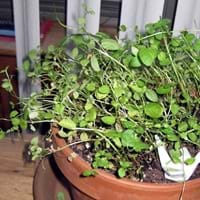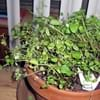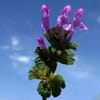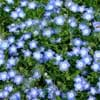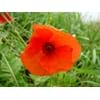Life Span
Annual and Perennial
Perennial
Type
Herbaceous Perennial, Herbs
Trees
Origin
Europe, Middle East
Asia, Europe, North America
Types
Mentha × piperita 'Candymint', Mentha × piperita 'Citrata', Mentha × piperita 'Crispa'
Black Ash, Blue Ash, California Ash, Carolina Ash, European Ash
Number of Varieties
Not Available
Habitat
Wide range of ecological site
Forest edges, Hillside, Woods
USDA Hardiness Zone
3-7
3-9
AHS Heat Zone
Not Available
12-8
Sunset Zone
Not Available
9, 12, 13, 14, 15, 16, 17, 18, 19, 20, 21, 22, 23, 24
Habit
Clump-Forming
Oval or Rounded
Flower Color
Purple
White
Flower Color Modifier
Bicolor
Not Available
Fruit Color
Non Fruiting Plant
Not Available
Leaf Color in Spring
Dark Green
Dark Green
Leaf Color in Summer
Green, Dark Green
Dark Green
Leaf Color in Fall
Dark Green, Green
Dark Green
Leaf Color in Winter
Light Green
Dark Green
Leaf Shape
Ovate elongated
Oblovate
Plant Season
Spring, Summer
All year
Sunlight
Full Sun, Partial Sun
Full Sun, Part sun
Type of Soil
Loam
Loamy, Sandy
The pH of Soil
Neutral, Slightly Acidic, Slightly Alkaline
Acidic
Soil Drainage
Well drained
Well drained
Bloom Time
Late Summer, Mid Summer
Late Spring, Spring
Tolerances
Drought
Drought, Pollution, Soil Compaction
Where to Plant?
Container, Ground
Ground
How to Plant?
From Rhizomes, Vegetative Reproduction
Grafting, Seedlings, Stem Planting, Transplanting
Plant Maintenance
Low
Medium
Watering Requirements
Requires plenty of water during the growing season
Does not require lot of watering, Medium, Prefer drip-irrigation instead of Over-head watering
In Summer
Lots of watering
Lots of watering
In Spring
Moderate
Moderate
In Winter
Less Watering
Average Water
Soil pH
Neutral, Slightly Acidic, Slightly Alkaline
Acidic
Soil Type
Loamy
Loamy, Sandy
Soil Drainage Capacity
Well drained
Well drained
Sun Exposure
Partial Sun
Full Sun, Part sun
Pruning
Remove damaged leaves, Remove dead branches, Remove dead leaves, Requires very little pruning
Prune in winter, Prune prior to new growth
Fertilizers
All-Purpose Liquid Fertilizer
All-Purpose Liquid Fertilizer
Pests and Diseases
Red blotch
Bark splits, Crown gall, Epicormic Sprouting, Woodpecker feeding
Plant Tolerance
Drought
Drought
Flower Petal Number
Double
Single
Fragrant Bark/Stem
Yes
No
Foliage Texture
Coarse
Medium
Foliage Sheen
Matte
Glossy
Allergy
flushing of face, Headache, Heartburn, Sore Throat
Not Available
Aesthetic Uses
Not Used For Aesthetic Purpose
Not Used For Aesthetic Purpose
Beauty Benefits
Maintains teeth healthy
Not Available
Environmental Uses
Prevent Soil Erosion
Air purification
Medicinal Uses
Mouth Sores, Pain killer, Vitamin A
Fever, Liver problems
Part of Plant Used
Flowers, Leaves
Leaves, Stem
Other Uses
In toothpaste, Mouth freshner, Used in flavouring curries, teas, used in Indian cuisine in curries
Used as Ornamental plant
Used As Indoor Plant
Yes
No
Used As Outdoor Plant
Yes
Yes
Garden Design
Herb
Shady Tree, Showy Tree
Botanical Name
Mentha × piperita
Fraxinus
Common Name
Peppermint
Ash Tree
In Hindi
पिपरमिंट
राख पेड़
In German
Pfefferminze
Esche
In French
Menthe poivrée
Frêne
In Spanish
Mentha × piperita
Fresno
In Greek
Μέντα
δέντρο Ash
In Portuguese
Hortelã-pimenta
Freixo
In Polish
Mięta pieprzowa
Jesion
In Latin
Peppermint
Fraxinum
Phylum
Magnoliophyta
Anthophyta
Class
Magnoliopsida
Magnoliopsida
Family
Lamiaceae
Oleaceae
Clade
Angiosperms, Asterids, Eudicots
Angiosperms, Asterids, Eudicots
Subfamily
Not Available
Not Available
Importance of Peppermint and Ash Tree
Want to have the most appropriate plant for your garden? You might want to know the importance of Peppermint and Ash Tree. Basically, these two plants vary in many aspects. Compare Peppermint and Ash Tree as they differ in many characteristics such as their life, care, benefits, facts, etc. Every gardener must at least have the slightest clue about the plants he wants to plant in his garden. Compare their benefits, which differ in many ways like facts and uses. The medicinal use of Peppermint is Mouth Sores, Pain killer and Vitamin A whereas of Ash Tree is Fever and Liver problems. Peppermint has beauty benefits as follows: Maintains teeth healthy while Ash Tree has beauty benefits as follows: Maintains teeth healthy.
Compare Facts of Peppermint vs Ash Tree
How to choose the best garden plant for your garden depending upon its facts? Here garden plant comparison will help you to solve this query. Compare the facts of Peppermint vs Ash Tree and know which one to choose. As garden plants have benefits and other uses, allergy is also a major drawback of plants for some people. Allergic reactions of Peppermint are flushing of face, Headache, Heartburn and Sore Throat whereas of Ash Tree have Not Available respectively. Having a fruit bearing plant in your garden can be a plus point of your garden. Peppermint has no showy fruits and Ash Tree has no showy fruits. Also Peppermint is flowering and Ash Tree is flowering. You can compare Peppermint and Ash Tree facts and facts of other plants too.
